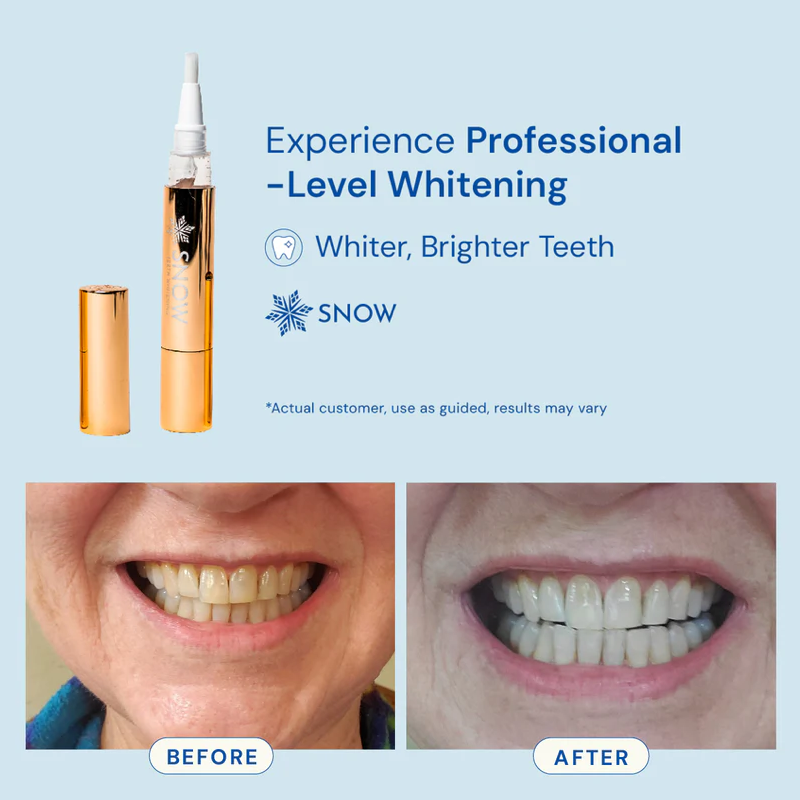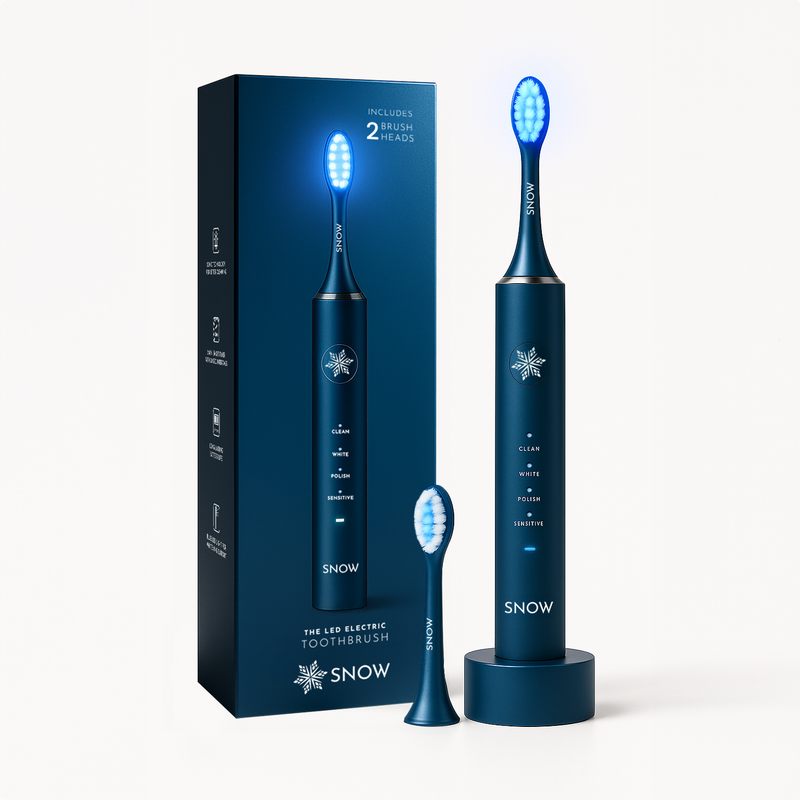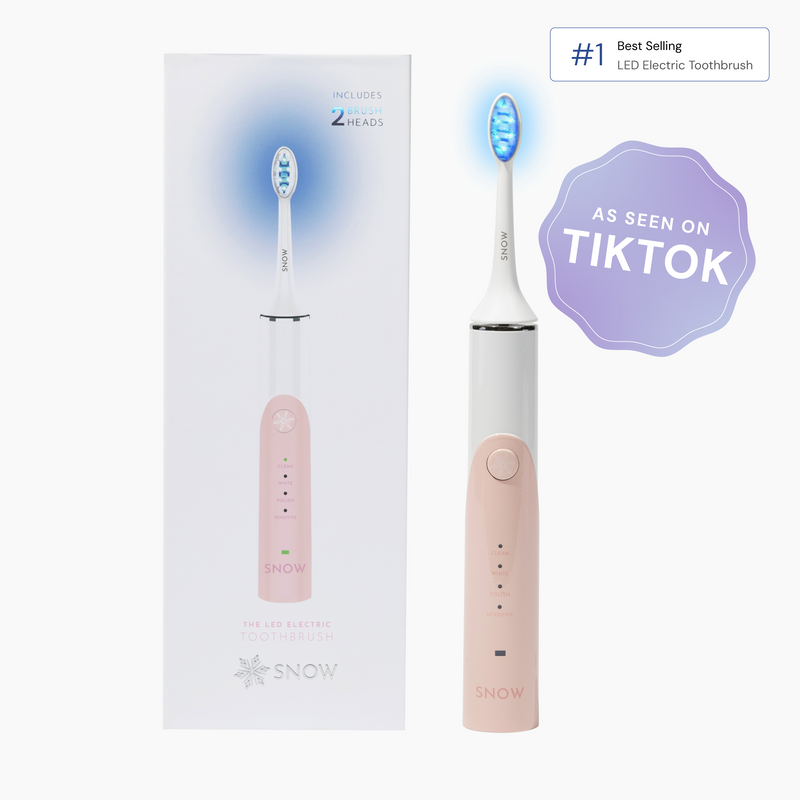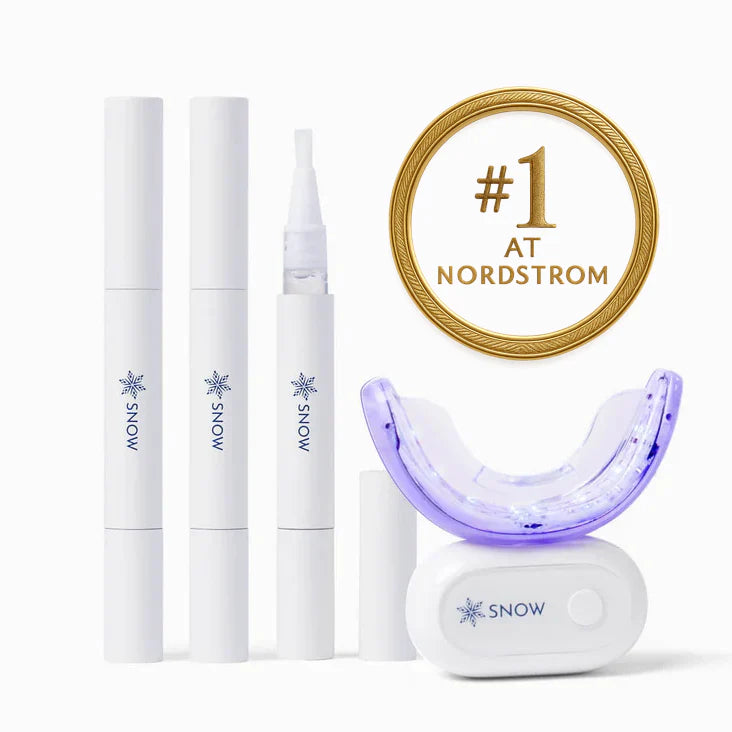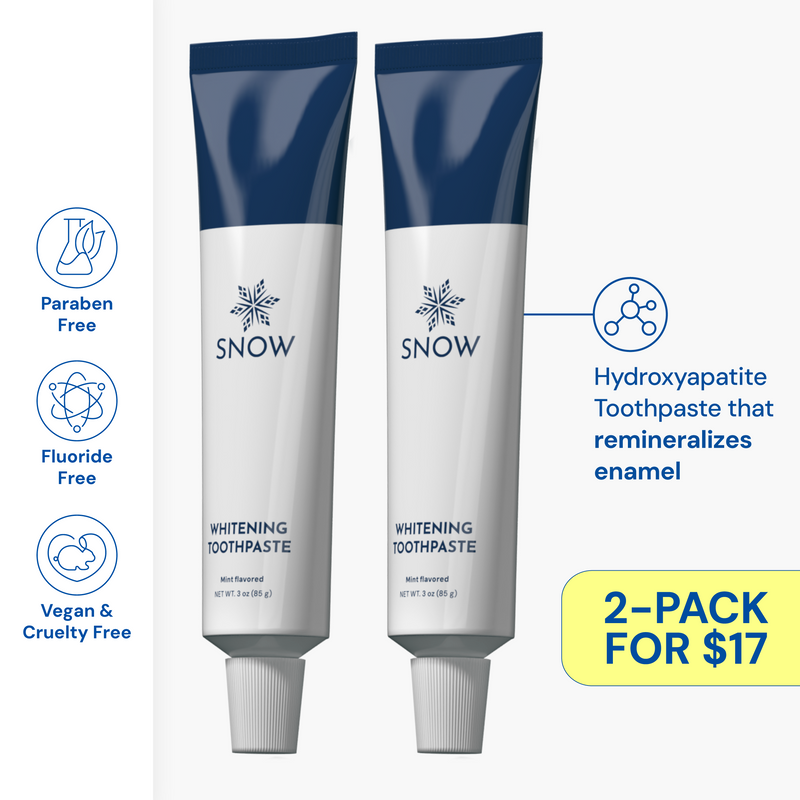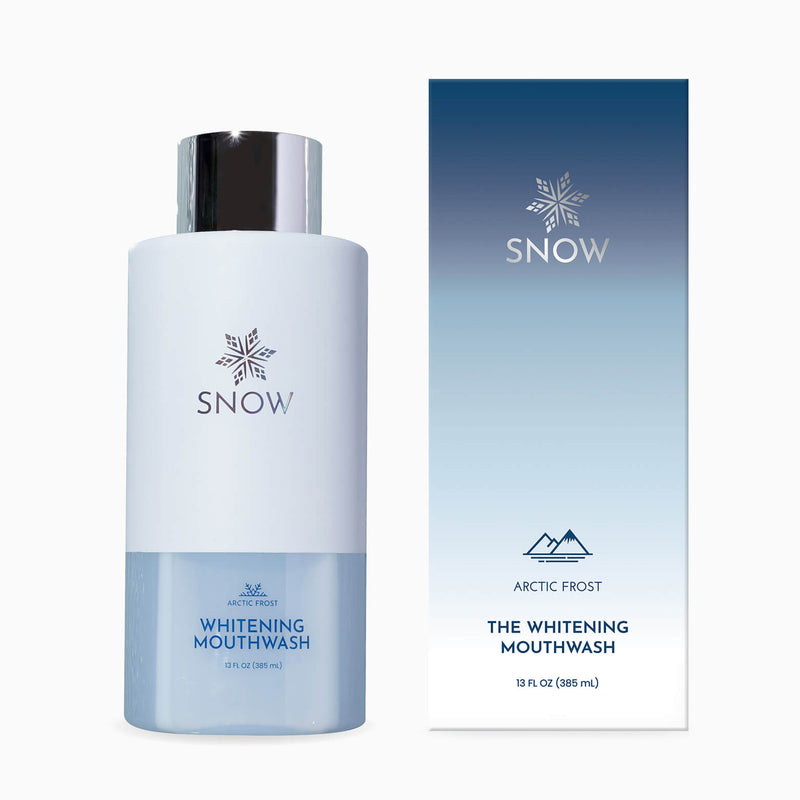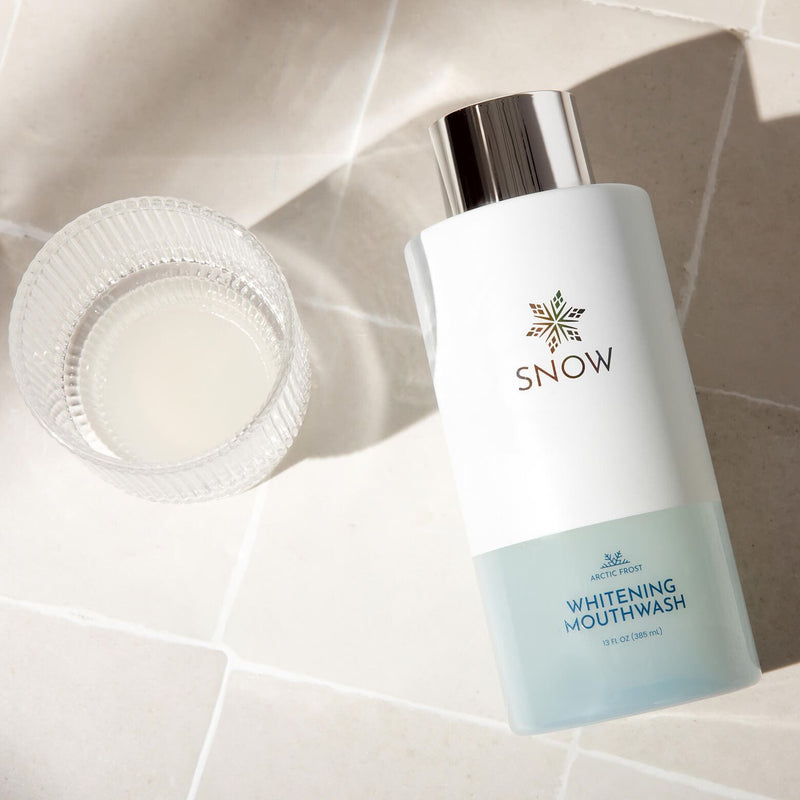Wondering how long it takes for whitening strips to work? Most people see results from teeth whitening strips within 3 to 7 days, with full effects in about two weeks. These whitening strips use peroxide to lift stains and brighten your smile, making them a simple at-home teeth whitening option. Results may vary based on your starting shade, sensitive teeth, and how consistently you apply them. Pairing with whitening toothpaste and good oral care can help enhance and maintain your results.
Key Takeaways
-
Teeth whitening strips contain peroxide-based gels that effectively remove both surface and deep stains, providing a convenient at-home whitening solution.
-
Initial visible results appear within 1 to 7 days of consistent use, with a full treatment duration of approximately 14 days for optimal whitening effects.
-
Factors such as peroxide concentration, the initial color of the teeth, and proper application influence the speed of results, while common side effects include tooth sensitivity and gum irritation.
How Do Teeth Whitening Strips Work?

Teeth whitening strips work by holding a peroxide-based gel (like hydrogen peroxide or carbamide peroxide) directly against the tooth surface for an extended period.
This gel releases oxygen molecules that penetrate the tooth's enamel and dentin, breaking down the chemical bonds of stain compounds (chromophores) through an oxidation process. This process is effective at lightening both surface (extrinsic) and deeper (intrinsic) stains.
As a result, this chemical breakdown of stains is what makes the teeth appear visibly whiter over the course of the treatment.
The active ingredients in teeth whitening strips include hydrogen peroxide or carbamide peroxide, usually in concentrations from 10% to 22%. These whitening agents break down stains by releasing oxygen that penetrates the tooth enamel, effectively lightening teeth.
Advanced seal technology keeps the active ingredients in close contact with your teeth, maximizing their effectiveness. This sealing technology is a key factor in the performance of teeth whitening strips.
Whitening strips are designed to tackle both extrinsic stains, which are on the surface of the teeth, and intrinsic stains, which are deeper within the tooth. This dual action makes them a versatile option for achieving a whiter smile.
Whitening strips are effective because they target and break down surface and deep-stain deposits, ensuring noticeable results and a brighter smile. Teeth whitening strips provide a convenient way to achieve these results.
When Can You See Initial Results from Whitening Strips?

Most users can expect to see the first initial results from using whitening strips within 3 to 7 days of consistent, daily use.
This initial period is typically when the peroxide gel has had enough cumulative contact time to lift the most recent or lightest surface-level (extrinsic) stains from the enamel. These first changes are often subtle but provide a visible sign that the oxidation process is working.
It is important for users to understand that this is just the beginning of the whitening process, and the more significant, deeper whitening will occur in the following week.
To better understand what to expect, here’s a comparison of common whitening strip types:

How Long Is a Full Whitening Strip Treatment?
For most whitening strips, the whole treatment lasts 14 days. While noticeable results may appear after just a few applications, completing the full regimen ensures longer-lasting effects. Whitening strips use peroxide-based gel containing hydrogen peroxide or carbamide peroxide, which gradually penetrates the enamel to remove surface stains and even reach intrinsic stains beneath the enamel surface.
According to the American Dental Association, consistent use over two weeks leads to whiter teeth and improved brightness for most users. This gradual whitening helps minimize tooth sensitivity while achieving more uniform results.
Many users have reported visible changes within just a few days, but maintaining the full schedule allows the whitening agents to reach deeper discoloration. Products like the SNOW Magic Strips are formulated for daily use and feature advanced seal technology for even gel distribution, enhancing the overall whitening effect.
What Factors Influence How Fast Whitening Strips Work?
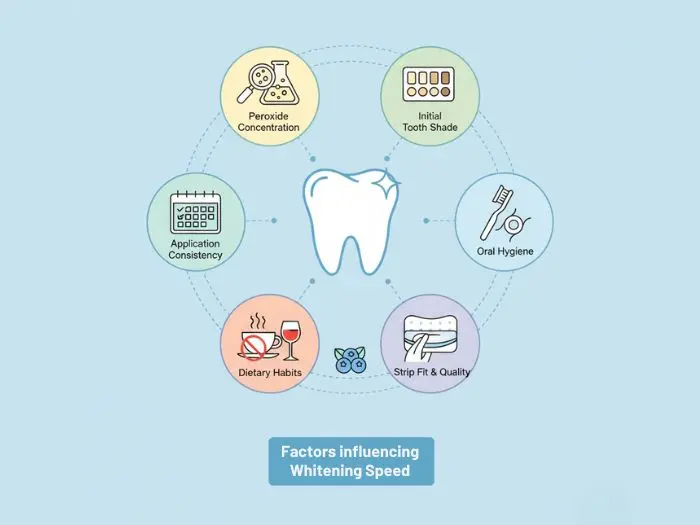
Several factors affect how long it takes for whitening strips to work, including the concentration of active ingredients, your starting tooth color, and your overall oral hygiene. Let’s explore the key variables:
-
Peroxide Concentration: Higher levels of hydrogen peroxide or carbamide peroxide often lead to faster teeth-whitening results but may also cause tooth sensitivity.
-
Initial Tooth Shade: Teeth with yellow surface stains typically respond faster than those with brown or gray intrinsic stains.
-
Application Consistency: Using whitening strips daily as directed is essential. Missing days can delay or reduce results.
-
Oral Hygiene: Practicing good oral hygiene, including whitening toothpaste, daily brushing, and flossing, enhances outcomes.
-
Dietary Habits: Consuming coffee, tea, red wine, or other staining foods and drinks can slow progress.
-
Strip Fit and Quality: Poorly applied strips or low-quality products may fail to evenly deliver the whitening agent.
SNOW's LED Whitening Kit includes custom-fit mouthpieces and high-potency whitening gel, ideal for reaching deeper intrinsic stains that over-the-counter products may miss.
Shop the SNOW LED Whitening Kit
What Are the Common Side Effects of Whitening Strips?

While teeth whitening strips are generally safe when used as directed, some users may experience temporary side effects. These effects are typically mild and subside once treatment stops. Understanding them and how to minimize their impact can help ensure a more comfortable whitening experience.
1. Tooth Sensitivity
Tooth sensitivity is one of the most common side effects of using whitening strips, especially with formulas containing higher concentrations of hydrogen peroxide or carbamide peroxide. The whitening agents penetrate the enamel to break down stains, temporarily exposing the underlying dentin and increasing nerve responsiveness.
A 2021 meta-analysis in the Journal of the American Dental Association found that about 40% of users experience mild to moderate tooth sensitivity during whitening treatments. This sensitivity typically resolves within two to three days after discontinuation.
Prevention Tips:
-
Use products with lower peroxide concentrations.
-
Space out treatments to allow teeth time to recover.
-
Switch to a toothpaste for sensitive teeth, such as SNOW’s Whitening Toothpaste, which contains gentle ingredients that protect enamel while maintaining results.
2. Gum Irritation
Gum irritation can occur if the whitening gel spreads beyond the teeth or if strips are not correctly aligned. The peroxide formula can irritate soft tissues, leading to temporary redness or discomfort.
A 2019 study published in Clinical, Cosmetic and Investigational Dentistry found that 15–20% of users experience gum irritation, which usually subsides within 24 hours. Correct strip placement significantly reduces this risk.
Prevention Tips:
-
Ensure strips fit snugly and do not overlap onto the gums.
-
Avoid swallowing excess gel during application.
-
Rinse thoroughly after each use to remove remaining peroxide residue.
3. Uneven Whitening
Uneven whitening results can occur due to inconsistent application or stubborn stains that react differently to whitening agents. Areas with thicker enamel or deeper discoloration may require longer treatment for even results.
A 2020 study in Operative Dentistry reported that uneven whitening affects about 10% of users, often due to misapplication or plaque buildup blocking peroxide contact. Maintaining good oral hygiene and ensuring clean, dry teeth before applying strips can help achieve more even results.
Prevention Tips:
-
Brush and floss before applying strips to remove food particles and plaque.
-
Apply strips evenly for the same duration on all teeth.
-
Pair your treatment with SNOW’s LED Whitening Kit for consistent and professional results.
Clinical evidence shows that most side effects related to teeth whitening strips, such as tooth sensitivity and gum irritation, are temporary and manageable. By carefully following directions, maintaining good oral hygiene, and using high-quality whitening products designed for sensitive teeth, you can achieve a brighter smile safely and effectively.
How Can You Get the Best Results from Whitening Strips?
Maintaining good oral hygiene is essential for both the effectiveness and maintenance of your whitening results.
Key practices include:
1. Brush with a whitening toothpaste twice a day
Using a quality whitening toothpaste helps remove surface stains and supports the effectiveness of whitening strips. Look for ingredients like hydrogen peroxide or carbamide peroxide for the best results. SNOW’s Whitening Toothpaste is a safe option that brightens without harming enamel.
2. Floss daily and rinse after meals
Flossing removes plaque and food particles that brushing can miss. Rinsing your mouth with water after eating helps wash away staining substances before they adhere to your teeth.
3. Apply whitening strips consistently as directed
Follow the full treatment schedule, typically 10 to 14 days, without skipping any doses. Consistent use allows the whitening agents to lift stains and help you achieve noticeable results gradually.
4. Prep your teeth before application
Always brush and floss before applying whitening strips. Dry your teeth with a clean cloth or tissue first so the strips adhere better and stay in place.
5. Use a straw for dark-colored drinks
When drinking coffee, tea, or red wine, using a straw can reduce the contact between staining liquids and your enamel, helping you maintain your whiter smile longer.
6. Avoid staining foods and drinks during treatment
Cut back on red wine, dark berries, soda, soy sauce, and coffee while using whitening strips. These items are known to cause discoloration and can reduce the whitening effect if consumed frequently.
7. Choose strips designed for sensitive teeth if needed
If you experience tooth sensitivity, switch to a gentler formula with lower hydrogen peroxide levels. SNOW’s Magic Whitening Strips are designed to whiten effectively without irritating sensitive teeth.
8. Stay hydrated and maintain good oral hygiene
Drink plenty of water throughout the day, and continue brushing and flossing daily. Maintaining good oral hygiene supports long-term results and overall dental health.
9. Avoid eating or drinking immediately after treatment
Let the whitening ingredients stay active on your teeth by avoiding food and beverages for at least 30 minutes after removing the strips.
10. Use whitening pens or gels for occasional touch-ups
To maintain your brighter smile after treatment, consider using SNOW’s Whitening Wand or Touch-Up Pen. These tools help remove mild surface stains and extend the duration of your whitening results between treatments.
Professional vs. Over-the-Counter Whitening
Professional treatments are preferred for those seeking more dramatic or longer-lasting results. Dental professionals can offer services that deliver more significant whitening results than over-the-counter options.
Over-the-counter products like whitening strips and toothpastes can be a convenient and affordable option for many people, even if they may not produce the same results as professional treatments.
Individuals with sensitive teeth, gum disease, or extensive dental work should consult a professional before using whitening strips to determine whether they are safe and to avoid complications such as enamel erosion or uneven whitening.
How Do You Maintain Whitening Results?
Whitening touch-up products, such as pens or whitening gel, help maintain results from teeth whitening strips and occasional touch-up treatments. Generally, these results can last from 6 months to a year with proper care.
Limiting the consumption of dark-colored beverages like coffee and red wine can help prevent new mild surface stains and remove existing ones. Avoiding tobacco products is also crucial as they can cause significant discoloration.
Good oral hygiene, such as regular brushing and flossing, is essential for keeping your radiant smile bright and can also help remove food particles and plaque that can cause staining, ensuring clean teeth and a dazzling smile, according to the American Dental Association. Additionally, practicing good dental care is vital for maintaining a confident smile and overall oral health.
Using a straw when drinking minimizes contact between staining liquids and your teeth, reducing new stains. Rinsing your mouth afterward can also help maintain your bright smile.
Final Thoughts
Getting a whiter, more confident smile with teeth whitening strips starts with understanding the process and being consistent in your routine. With just a few applications, you can begin to notice changes, but reaching your desired results takes patience, proper use, and ongoing oral hygiene. Avoiding staining foods and drinks and maintaining healthy habits will help your smile stay bright longer.
If you're dealing with more stubborn stains or wondering how long does it take for whitening strips to work, SNOW offers dentist-developed solutions that balance effectiveness and sensitivity. Their whitening strips and whitening toothpaste are made for real results, helping you remove surface stains while being gentle on your enamel.
Explore SNOW’s Whitening Products Today!
Frequently Asked Questions
Get quick answers to common questions about whitening strips, how long they take to work, side effects, and how to maintain your brighter smile.
How long does it take to see initial results from teeth whitening strips?
You can expect to see initial results from teeth whitening strips within 3 to 7 days of consistent use. Regular application is key for optimal results.
What are the common side effects of using teeth whitening strips?
Common side effects of using teeth whitening strips include mild and temporary tooth sensitivity and gum irritation. It's important to monitor these effects and consult a dentist if they persist.
Can I use teeth whitening strips if I have sensitive teeth?
If you have sensitive teeth, it's advisable to consult a dental professional before using whitening strips to prevent any complications. Your dentist can provide personalized recommendations for safe whitening options.
How can I maintain the results of teeth whitening strips?
To maintain the results of teeth whitening strips, prioritize good oral hygiene, avoid staining foods and drinks, and consider using touch-up products as needed. This approach will help prolong your whitening effects effectively.
Are over-the-counter whitening strips as effective as professional treatments?
Over-the-counter whitening strips can be effective, but they typically do not deliver results as impressive as professional treatments. They're a convenient and affordable option for maintaining dental brightness, but for significant whitening, professional solutions are recommended.

















































